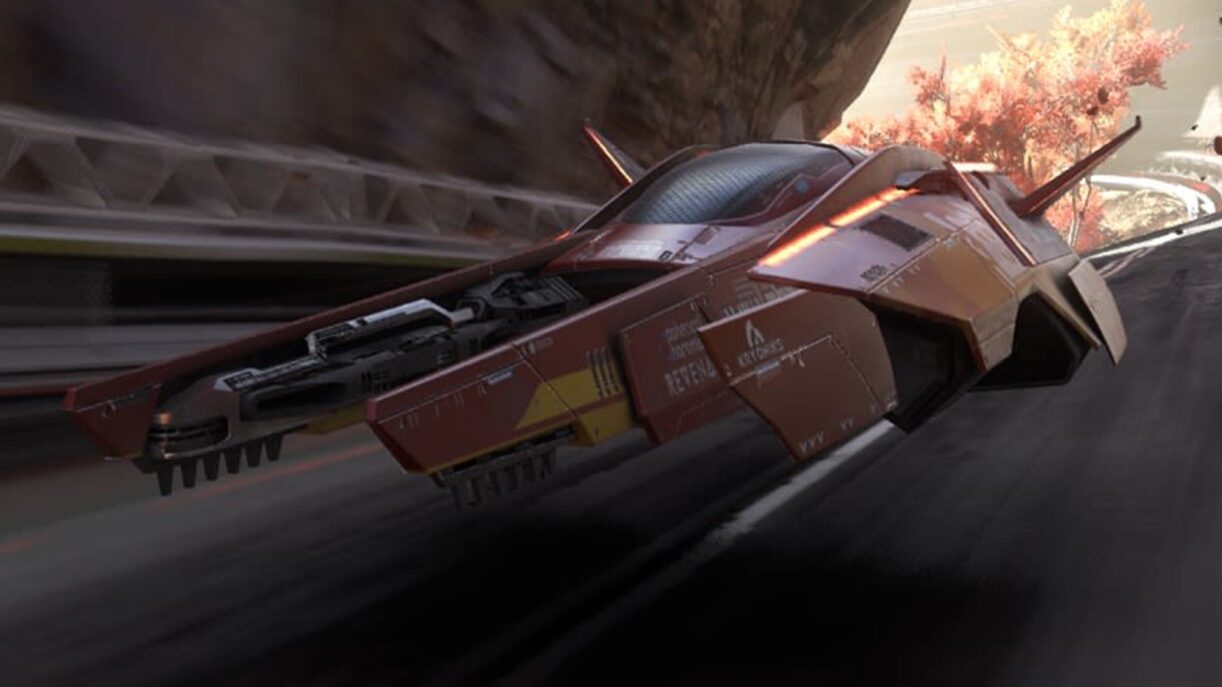Fast Fusion Review
Experience the Thrill of Speed and Futuristic Racing
Building on the legacy of iconic titles like F-Zero and Wipeout, Fast Fusion delivers blazing-fast gameplay that captures the adrenaline rush of high-speed sci-fi racing. Since its debut in 2011, the Fast series has been celebrated for its exhilarating speed and tight controls. In Fast Fusion, players are immersed in a future where racing machines hurtle through obstacle-strewn courses at supersonic speeds, offering an intense and visually stunning experience.
Futuristic Courses and Dynamic Mechanics
Every muscle in your body tense up as you blast through a handful of futuristic tracks, utilizing new mechanics such as jumping to uncover shortcuts and evade hazards. As one of the exclusive titles for the upcoming Nintendo Switch 2, Fast Fusion showcases the console’s impressive graphical capabilities, featuring detailed environments and smooth 4K visuals in docked mode. However, some players might find the progression choices frustrating, and the gameplay familiar to veterans of previous Fast entries.
Jump Mechanics and Course Design
The addition of a jump button, a common feature in recent Switch 2 racing titles, distinguishes Fast Fusion from its predecessors. While it introduces new layers of complexity, enabling players to leap over gaps and navigate alternative paths, its impact remains modest. The developer, Shin’en, integrated this mechanic to expand course layouts with alternate routes and shortcuts, but these additions often feel like minor tweaks rather than game-changing innovations. The mechanic’s range is impressive, allowing for massive jumps, but mastery doesn’t necessarily translate into significant strategic advantages.
Visual Excellence and Technical Showcase
Compared to Fast RMX from 2017, Fast Fusion reflects the incremental graphical improvements expected between console generations. It boasts stunning lighting effects, highly detailed environments, and consistent 60 FPS performance when played in 4K docked mode. Although it may lack the initial “wow” factor of some earlier titles, the visual fidelity remains impressive. Shin’en offers various graphics settings, allowing players to prioritize either resolution or framerate, which is especially appreciated during split-screen multiplayer sessions.
Futuristic Vehicles and Customization
In Fast Fusion, players can choose from a diverse garage of vehicles, each with distinct stats like top speed, acceleration, and boost capacity. The vehicle customization system encourages experimentation, with options to focus on boosting, acceleration, or a balanced approach. Progression involves unlocking new vehicles using in-game currency earned through races and fusing them to create more powerful counterparts. The fusion mechanic, while adding depth, can feel limiting since it removes the original vehicles from your garage and requires additional currency, which is also needed to unlock new racing cups.
Progression Challenges and Game Economy
The game’s progression system can feel overly restrictive, as higher difficulty cups are locked behind winning in lower tiers, and unlocking new vehicles and fusion options demands significant grinding. This artificial scarcity can be frustrating, especially since each fusion costs in-game currency, and players must unlock multiple cups per speed class. While this structure adds a layer of challenge, it may also hinder accessibility and slow down the sense of progression, making the experience feel more like a grind than a thrill.
Additional Modes and Replayability
Fast Fusion offers various side modes to diversify gameplay and earn extra credits. For example, Hero Mode links your vehicle’s boost and health, adding a new strategic layer. However, many of these modes are minor variations of standard races, with little variation in course design or challenge complexity. While they provide some variety, they don’t fully alleviate the repetitive nature of unlocking content.
Level Design and Track Innovation
Compared to the larger scope of Fast Racing Neo, Fast Fusion features fewer courses, but each track is crafted with clever design elements that demand sharp reflexes and strategic thinking. Tracks like Yama Crest with its series of shortcuts or Tempesta with its tornado hazards keep the gameplay fresh and engaging. The emphasis on well-designed levels makes the game stand out, encouraging players to discover new routes and optimize their runs continually. Boost orbs serve as helpful cues, guiding players toward efficient paths and hidden shortcuts that can shave precious seconds off lap times.
Conclusion
While Fast Fusion may not revolutionize the racing genre, it excels in delivering a polished, visually stunning experience with tight controls and thoughtfully designed courses. Its incremental improvements over previous titles highlight the capabilities of the Nintendo Switch 2, making it a must-play for fans of high-speed sci-fi racing. Despite some gameplay and progression limitations, the game’s focus on level design and speed thrills ensures it remains an exciting addition to the console’s library.

